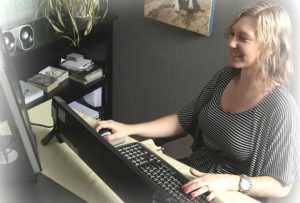The idea is like the nucleus of a cell–it kickstarts physical activity and growth.
Coming up with the big idea however can be the biggest stumbling block to getting started as an entrepreneur. And often times the idea you start with morphs into something different as you test it.
Twitter started out as a podcasting platform called Odeo until Apple announced its iTunes Podcasting product and they had to go back to the drawing board. Facebook was originally for college students looking to maximize their dating opportunities.
Net, being flexible as you get customer input and competitive intelligence can make or break your business potential.
The Idea
To find your “big idea”, start by solving a real problem; identify a product or service that is needed, has a potentially large market, and is sustainable. How many times have you thought or said out loud, “I wish there was a better way to (fill in the blank)” or, “Why hasn’t anyone created (fill in the blank)?” This is the genesis of a new and potentially successful business.
If you don’t already have an idea, one approach is to brainstorm a particular category and outline what is working and not working. Check out Popplet for a fun (and productive!) online alternative to traditional mind-maps and brainstorming. Finding a good strategy for coming up with a good (or even great!) idea will help form the basis for a new business. Once you have identified a business idea and honed the positioning, you will need to vet that idea to determine if it is marketable. A SWOT analysis is a tried and true technique for this analysis. Much of what goes into the SWOT analysis will be necessary for a business plan. The strengths and opportunities need to be compelling, while the weaknesses and challenges should not be insurmountable. No business is without obstacles. The challenge is to avoid being blindsided by them. Anticipating the challenges and designing a business that mitigates them is the goal. For some, buying a franchise is a more direct and comfortable way to be your own boss. To get started, here is a list of the top 100 global franchises.
Name/Trademark
Assuming you are starting a small business from scratch, the name of your company is a key part of branding, so give this a lot of thought.
Create a list of several possible names and then go here to see if the domain name, Twitter handle and Facebook URL are available. Another option is Panabee. On this one site, the user is able to put in keywords or the business name and see what is available for domain names while brainstorming alternatives, “See many ideas with one click — translations, phonetic variations, related terms, and more.”
Even if yours is not a web-based business, you will want a website as part of your marketing plan. If the name is already taken but available for sale, this company can help with a possible purchase.
Once you have selected a name and you have purchased the domain rights to it, consider trademarking the name. It gives you protection against others and it becomes an asset of the business. Trademarking also avoids the possibility of incurring expenses at a later point to change your company name and promotional materials if the rightful owner of your company name legally challenges your company.
For an overview of trademarks, patents and copyrights, here is a “Simple Guide”. To pursue a trademark for your small business, check out CorpNet.
Before you get too far with branding your business, take some time to look at your intellectual property (IP). Traklight is a tool for outlining and protecting your IP, providing tips and warning about potential risks.
Don’t forget to get creative- bring your company name to life by creating a logo. A design you love, or 100% of your money back at 99designs.com. Also, Slogan Slingers is a website that uses a competitive format to deliver tag lines and slogans quickly and on the cheap.
At some point you may want to consider a patent for your product. As of March 2013, the U.S. adopted a first-to-file system and under this system the first inventor to file an application (not to invent), gets the patent. Prior to that date, inventors could document the building and testing process to prove an earlier date of invention.
Under the new law that is not possible. An inventor can still file a patent application and mark the invention with a “patent pending” label before shopping it around. If you are considering filing a patent, we recommend this “turnkey approach.”









